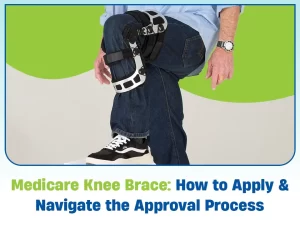Orthotics are custom-fitted inserts designed to cushion and support the foot while redistributing energy during motion. They limit excessive movement and realign foot joints when standing or walking. Orthotics are prescribed to treat various foot conditions, including diabetic neuropathy, plantar fasciitis, Achilles tendonitis, overpronation, and many others.
Orthotics are made by a podiatrist who conducts a foot evaluation so the orthotic can be custom-fitted to the foot. The podiatrist can send a foot impression kit where a physical assessment is impossible.
Orthotics come at a cost, usually between $200 and $800. While they are effective, they are pricey, especially custom orthotics. Although expensive, your orthotics are something you don’t want to go cheap on, as failure to support your feet can lead to serious injuries and longer-term damage to your joints—not to mention more expensive medical expenses further down the line. If you’re having trouble paying for your custom orthotics, here are some ways you could get help to pay for them.
What Are Custom Foot Orthotics?
Custom orthotics are corrective footwear devices that are created from a mold of your feet. They are designed to improve gait, holding your feet in the proper position so that the joints, ligaments, and muscles are able to function as they should. Moreover, orthotics can help you heal after an accident or after surgery. They are also used to repair or allow you to walk comfortably with foot issues such as heel spurs, bunions, callouses, shin splints, and running injuries.
How Do You Get Custom Foot Orthotics?
You need a prescription for a pair of orthotics custom-made for your feet. You can acquire a prescription from a podiatrist by getting a referral from your doctor or a physiotherapist.
Does Insurance Cover Orthotics?
Fortunately, you can get partial or full reimbursement for what you spend on orthotics. Many health benefit plans include coverage for specific medical conditions and treatments, including orthotics. These plans provide either partial or complete coverage for custom orthotics obtained with a doctor’s prescription.
It’s always best to check the specific details of an insurance plan to understand its limitations and just how much coverage it will give you. Only then should you choose an insurance plan, especially when obtaining coverage for orthotics.
Read More: Knee Bracing: 5 Benefits Of Using Knee Orthosis For Osteoarthritis
What Is Required For Insurance Coverage For Orthotics?
Orthotics can eliminate the need for long-term dependency on medication, physical therapy, or surgery. Consequently, many insurance plans consider orthotics as therapeutic medical devices and provide coverage.
For example, the Flexible Savings Account (FSA) provides full insurance coverage. Others, like Medicare, pay 80% of the cost while you have to cover the rest. However, the specific requirements for insurance coverage for orthotics depend on your health benefit plan.
Generally, orthotics are covered if:
- They are considered medically necessary and prescribed to treat a diagnosed medical condition covered under the health benefit plan.
- A qualified medical practitioner prescribes orthotics for protection, support, pain relief, and body alignment.
- The insurance contract specifically covers orthotics.
- They are made from the appropriate material, which is often pre-specified in your plan.
You can check your health benefits package on your insurance provider’s website to find out the specifics of their coverage based on your package. For instance, with the FSA and Health Reimbursement Arrangements (HRA), you are eligible for reimbursement when you pay for orthotics and insoles out of pocket.
So, you can use the FSA or HRA to buy custom orthotics whenever you buy an insole, as long as you have an active account. All you need to do is provide the purchase receipt on request. The type of orthotic, price, quality, and the material don’t matter as long as you can present the receipt showing your payment details.
What’s The Difference Between The Calendar Year And Year-To-Date Coverage?
Calendar year coverage provides coverage between January 1 and December 31 of any given year. Year-to-date insurance requires 12 full months to elapse before a renewal can be claimed. For example, if you purchased your orthotics on January 14, 2023, and have year-to-date insurance, you will be eligible to submit a claim for another pair on January 15, 2024.
How To Get Covered By Insurance
To get insurance coverage for your orthotics, you naturally need to be covered by a health benefits plan.
The following steps are involved in this process:
- First, you have to research different plans and what they cover. Ideally, you want to choose a plan that provides coverage for custom orthotics. You also want to determine how many orthotics your plan covers per year.
- Then you’ll need to select the most suitable insurance provider to factor in details about premiums, claims verification, etc.
- You should get underwritten to determine your baselines and be eligible to receive coverage for some medical expenses. If your provider isn’t satisfied with your baselines, they may send you a new quote with a higher premium to pay.
- Confirming your insurance plan’s specifics with your insurance provider is best.
- Lastly, you’ll need to choose your beneficiaries and begin paying your premiums based on your pre-specified agreement.
The following are usually necessary to get your orthotics covered by insurance:
- A diagnosis from a podiatrist or foot care specialist.
- A prescription for a custom orthotic from a qualified professional.
- A description of the raw materials used to make the orthotics.
- Details about the casting method.
- A biomechanical gait analysis report.
- A list of dates for the foot exam.
- The orthotics order date.
- A transaction receipt or payment evidence.
Read More: Sprained Ankle: Diagnosis, Treatment, and Recovery
Are Orthotics Covered?
You may have coverage through work or spouse, and most private insurance plans cover custom orthotics. To be eligible for this type of coverage, you’ll need a prescription from a qualified healthcare professional and a diagnosis from a foot-care specialist that says what and why you need the orthotics.
Why Do Orthotics Cost So Much?
Unlike over-the-counter insoles, which are generic and can be easily purchased by walking into a store, different types of custom orthotics are specially designed to fit a particular foot and address specific foot conditions. Because of this, they tend to be more expensive than over-the-counter orthotics.
Should You Wear Orthotics Every Day?
Generally, you should wear custom orthotics whenever possible, but there are times when it matters more than others. It is more important to wear your insoles when your feet are working hard, standing for long periods, or exercising.
How Often Do Orthotics Last?
While a typical custom orthotic might last around 2-3 years on average, only some cases are typical. Some people need theirs replaced every year, while others can get 5 years or more (occasionally much more) of use out of theirs. In other words, it really is a case-by-case thing.
How Do You Know If Orthotics Are Working?
You should not experience any pain while standing, jogging, or even jumping in your orthotics. Also, your foot shouldn’t experience pain from calluses or corns, which are signs your feet have been rubbing inside your shoe.
Bottom Line
Ultimately, if you want to get your orthotics covered by insurance, it is essential to do your research and talk to your doctor or podiatrist about your specific needs and coverage options. With the right planning and preparation, you can find the right treatment solution that works for you and fits within your budget.
Using these simple steps, it is easy to get your orthotics covered by insurance and start enjoying the pain-free benefits of these specialized shoe inserts. So what are you waiting for? Get started today and start feeling better tomorrow!
Are you in need of pain relief or recovering from an injury or surgery? Connect with us today to check eligibility and see how we can help.
Artik Medical Supply provides high-quality, long-lasting products. We focus on our client’s needs to find the right solution that aligns with their primary care doctors’ guidance for their rehabilitation process.







